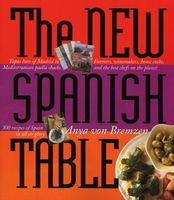Advertisement
Sherry
Published 2005
Banish the image of that dusty bottle of cream sherry in your grandmother’s cupboard. Good dry sherry—Jerez in Spanish—is one of the world’s sexiest drinks, an ideal companion to tapas. The wine is named after the town of Jerez de la Frontera, where most of it is produced and where viticulture has flourished since the time of Phoenicians in the twelfth century B.C. The sherry grapes, predominantly Palomino, as well as the sweet Pedro Ximénez, grow in the area’s unique chalky soil called albariza, which soaks up winter rain like a sponge, and feeds the deep, craggy roots of the vines throughout the hot, arid summers. After the grapes are picked, crushed, and fortified with grape spirits, the liquid is placed in wooden casks, where the wine may develop a characteristic covering of yeast called flor (flower) on its surface. Flor intensifies the wine’s flavor, keeping it crisp and dry. Sherry that develops flor will be labeled fino; sherry that doesn’t will be left to oxidize and will be sold as oloroso. Next, the sherry undergoes a complex maturing and blending process known as the solera, in which some of it is blended at regular intervals with wine from an older barrel and then topped up with a younger wine. This ensures consistency and leaves consumers free from having to worry about particular vintages. Bottled sherry comes in the following categories:

